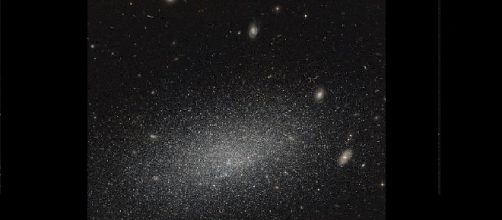Using the Advanced Camera for Surveys in Hubble, scientists have categorized UGC 4879 as an isolated dwarf irregular galaxy at approximately 1.36 plus or minus 0.03 Mpc. The galaxy is located in the edges of the local group and 700 Kpc from its closest neighbor Leo A. the isolation in which this galaxy is found makes it an ideal subject for studying star formations.
UGC 4879
Observations carried with ACS generated a stellar photometry of this galaxy. It is estimated to be beyond the region of the local group, rather than within, as previously suggested.
It´s location is equidistant from the Milky Way and M31 by (1.38 Mpc), while it is separated by 1.5 Mpc from IC 342 and 2.4 Mpc from M81. Leo A at 700 Kpc is the closest galaxy to UGC 4879.
The position in which this galaxy lies in boundaries of the local group suggests that its star formation has not been influenced by other galaxies. The relative proximity make it feasible to resolve its stellar constituents and being far away from the influences of other galaxies makes it an attractive target for studying star formation.
Stellar formation
The color Magnitud diagram (CMD) of UGC 4879 shows two distinct star populations. Old Stars that abound in the RGB, while less abundant in the AGB, and Young stars that exist in the main sequence and in less quantities in the RGB and AGB.
The best estimates show that significant star formation began 4 Gyr after the Big Bang, then 9Gyr of inactivity until about 1 Gyr ago in which the formation of stars is calculated again.
The galaxy has not been stripped from its gas due to interactions with other galaxies, and the gravitational force is strong enough to prevent depletion due to galactic winds, which is the mechanism by which other isolated dwarf conglomerations, such as KKR25, have lost its gas.
Unlike KKR25, H1 was detected in UGC 4879 and its contents extend beyond the view of the limits of the galaxy, suggesting that some gas outflowing may have taken place.
This lonely galaxy will continue to provide plentiful of material for the study of star formation.

